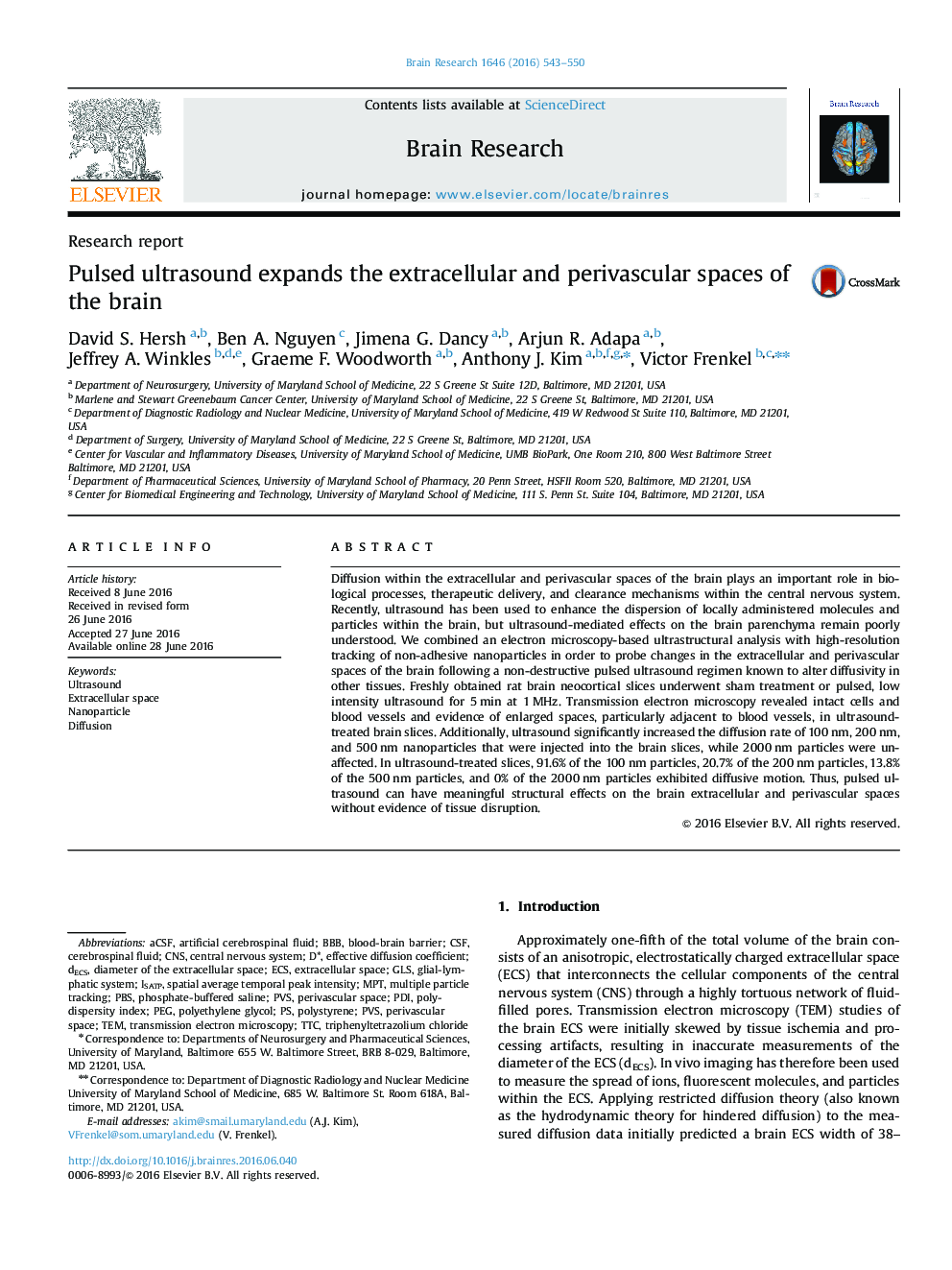| Article ID | Journal | Published Year | Pages | File Type |
|---|---|---|---|---|
| 6262402 | Brain Research | 2016 | 8 Pages |
â¢Pulsed ultrasound can enlarge the pore size of the brain extracellular space.â¢These ultrastructural changes are not associated with widespread tissue disruption.â¢The effects of ultrasound on the extracellular space are heterogeneous.â¢These effects may preferentially affect perivascular regions.
Diffusion within the extracellular and perivascular spaces of the brain plays an important role in biological processes, therapeutic delivery, and clearance mechanisms within the central nervous system. Recently, ultrasound has been used to enhance the dispersion of locally administered molecules and particles within the brain, but ultrasound-mediated effects on the brain parenchyma remain poorly understood. We combined an electron microscopy-based ultrastructural analysis with high-resolution tracking of non-adhesive nanoparticles in order to probe changes in the extracellular and perivascular spaces of the brain following a non-destructive pulsed ultrasound regimen known to alter diffusivity in other tissues. Freshly obtained rat brain neocortical slices underwent sham treatment or pulsed, low intensity ultrasound for 5Â min at 1Â MHz. Transmission electron microscopy revealed intact cells and blood vessels and evidence of enlarged spaces, particularly adjacent to blood vessels, in ultrasound-treated brain slices. Additionally, ultrasound significantly increased the diffusion rate of 100Â nm, 200Â nm, and 500Â nm nanoparticles that were injected into the brain slices, while 2000Â nm particles were unaffected. In ultrasound-treated slices, 91.6% of the 100Â nm particles, 20.7% of the 200Â nm particles, 13.8% of the 500Â nm particles, and 0% of the 2000Â nm particles exhibited diffusive motion. Thus, pulsed ultrasound can have meaningful structural effects on the brain extracellular and perivascular spaces without evidence of tissue disruption.
